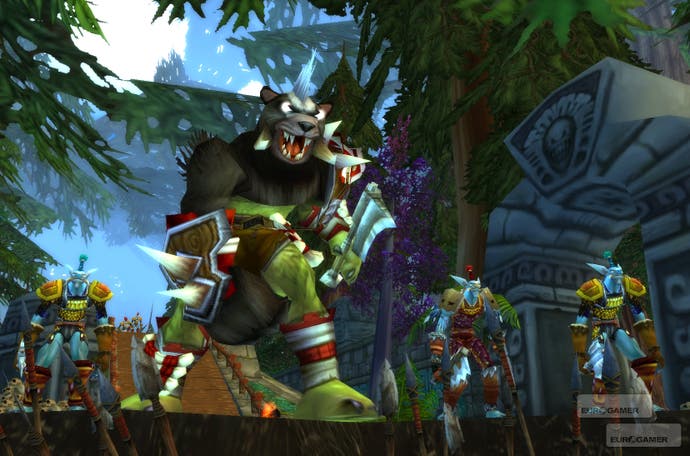The Making of World of Warcraft
Part Two: Five years at the top.
There were problems brewing, too, for Chilton's PvP systems. While players had embraced the Arena combat, enjoying its highly skill-based nature, there was discontent over what were termed "Welfare Epics" - high-level gear which, as far as many players were concerned, was being handed out like candy to PvP players without having to put in the kind of effort that raiding players needed.
"The path of least resistance for the player base was that PvP allowed you to get gear easier than PvE," Brack admits. "In the Burning Crusade days, the PvE stuff was very hard on the 25-man content side. It took a lot of coordination and a lot of effort, and it felt like, on the PvP side, it didn't quite have the same level of commitment, the same level of expense, of time, of everything that you needed to have."
"The idea of having ten-person raids and 25-person raids in Lich King stemmed directly from the popularity of Karazhan and the realisation that people really liked ten-man content," says Brack. Simultaneously with the updates to The Burning Crusade, Blizzard had started work on the second expansion Wrath of the Lich King, which would return the action to Azeroth and bring back Warcraft III: The Frozen Throne's major villain, Arthas, the Lich King.
"A lot of people's comments were, I never got to see Illidan! I never got to do that content - he's the big boss, he's in the intro of Burning Crusade, but only the very highest-end guys could ever really get to see him," says Brack. "We thought, OK, what if we make two versions of the same thing and give more players that opportunity?"
Meanwhile, new technology created for Wrath of the Lich King would give Chris Metzen and his creative team new tools for storytelling. At last, the static world which had given him so many creative headaches before the launch of the original game was going to become a little bit less static.

"We developed technologies that allow us to push the envelope a little bit: the phasing technology," Metzen says. Phasing, which allows players to move seamlessly and in large numbers between world-states, was exemplified by the spectacular starting quests for Lich King's new character class, the Death Knight.
"If you play through the Death Knight experience, we make great use of phasing in terms of concluding certain chapters of the story. The world begins to change and the plot can really change on a dime with phasing. It frees us up to construct less of a static world," Metzen says. "If you play through the old-world quests, and then you play something like Wrath of the Lich King, I think it's so much more rewarding and satisfying - from a fictional standpoint, from a game design standpoint. You can definitely see us learning on the job."
It's not just quality but quantity which has increased. "WOW at release had about 2000 quests," reveals Brack. "Burning Crusade had 5500 quests. Wrath of the Lich King has, I think, around 8000 quests - and those are on just ten levels, versus the first 60 levels in the original game."

Another facet of storytelling which Blizzard has learned on the job is how to handle its villains. From hiding Illidan away in a deep dungeon in The Burning Crusade, the team moved into Lich King with the intention of making Arthas much more of an out-and-about, man-of-the-people kind of bad guy.
"The big villain needed to be much more accessible," confirms Brack. "You can see a lot of those changes in how we handle Arthas in low-level quests - and there's an entire chain of quests in Icecrown that players can do at level 77 where you actually get to control Arthas, to live through his story.
"There's the Culling of Stratholme where you actually fight beside Arthas, before he becomes the Lich King. You see his moment of decision, the moment he decides to start down the dark path. Those kind of things help people to understand why they're here, what it's about, what they need to be doing. This is why I'm conquering Northrend. This is why I'm levelling up - beyond just wanting better gear and achieving the next level."
